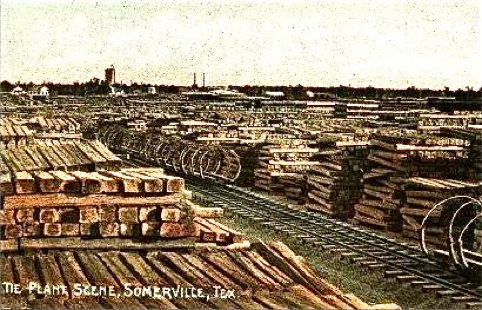The World Moves On
A recent photo on Facebook caught my attention. The scene was the main street of a small town. The street was lined with old, one story buildings with a permanent awning covering a wide sidewalk. Every store was vacant.
That must be Somerville, my hometown, I thought. The caption, however, labeled it as the main street of Lott, a small town in Falls County near my wife’s home of Marlin.
What really caught my attention, though, was this comment accompanying the photo: “Rick Kennedy: Every time my opponent touts the tax bill I wonder - has he ever been to Lott (pictured here)? Or Marlin? Or Teague? We need an economy that works for everybody. We need a Congress that works for the people. #RickKennedyforCongress #TX17”
There was no need to search for Kennedy’s biography on the internet. It is apparent that he is a Democrat. The last two sentences of the quote establish that fact.
Kennedy obviously believes that the federal government is the answer or solution to every problem. If there is no problem, the Democrats will create one.
Consider Somerville, a mirror image of Lott that is a concern of Kennedy.

A century ago, Somerville was the largest town in Burleson County.
Highway 36, then a graveled road, was main street. The buildings were set far enough from that two lane road so that horse or mule drawn wagons and buggies could angle park along that main street.
Until mid-century, Somerville was a thriving community. At one time, it had two physicians. a dentist, two pharmacies, four clothing stores, a “five and dime” store, a movie theatre, six grocery stores, three meat markets, Citizen’s State Bank, three filling station/auto repair shops, two shoe repair shops, a tin smith, two restaurants, three school districts (White, Black, and Mexican), a company of the 36th Infantry National Guard, and, for a short while, a Studebaker dealership.
So how did Somerville morph into the shell of a town that it is today? The answer is found in the rest of the story.
The railroad made Somerville. A more appropriate city name may have been Santa Fe.

That company was the only major employer in town.
Its Tie Plant there was reportedly the largest railroad tie treating plant in the world. All of its operations required back breaking labor from many employees.
The “Round House,” also with a large work force, was a red brick building in a half circle around a turn table that could hold and turn the largest steam engines on the railroad. Engines were brought there for repair and then driven on the turn table to roll back the way they came or take off in the opposite direction.
One of the 82 Harvey Houses in the nation was in Somerville. During that time, passenger trains did not have dining cars, so some of the six or more passenger trains that passed through Somerville every day would stop long enough for passengers to grab a bite in the two story Harvey House.
A branch line from East Texas joined the mail line in Somerville and the “Dinky” passenger train pulled into the station on that line every night around 11:00 p.m. And yes, there are Dinky lines. Look it up on the Net.
There were two switch engines using the five or six switch lines to rearrange or make up lines of cars dependent on the destination of each car.
Two crews of “Gandy Dancers” kept the rails in repair and one man had a personal small rail car to maintain all the electric signals and devices.
There was, of course, a depot operation to handle incoming and outgoing freight for Somerville and ticket and Western Union operations.
So what happened? Why did the main street of Somerville become a ghost town?
History, again, is the answer.
There is no longer an independent Santa Fe. It is now a part of the larger Burlington-Northern operation.
Steam engines have been replaced with more efficient diesel engines that require a different type of maintenance. Those engines have control cabins at each end, so there is no need for turn tables. Consequently, the Round House no longer exists.
The Harvey House has been replaced with dining cars.
Freight trains were poor competitors with tractor trailers that carry as much as a box car and can haul door to door.
The explosion of airline travel and every family owning two cars has largely eliminated the need for passenger trains.
The two lane Highway 36 is now four lanes that leave just enough room for parallel parking in front of the stores. With heavy traffic whizzing along very close to those parking spots, it is hard and dangerous to pull in between two cars already parked.
The only railroad activity remaining in the once vibrant Somerville is a small tie plant with most operations mechanized and automated and a small amount of switching to make up a few trains.
So here’s the perspective.
Lott, which caught the attention of candidate Kennedy, probably has a history similar to Somerville, but based on some formerly robust activity other than a railroad.
How could the government at any level have saved either?
Thinking that the government could have saved, and will save in the future, all small towns like Lott and Somerville is one of the problems of Kennedy’s party.
enough





